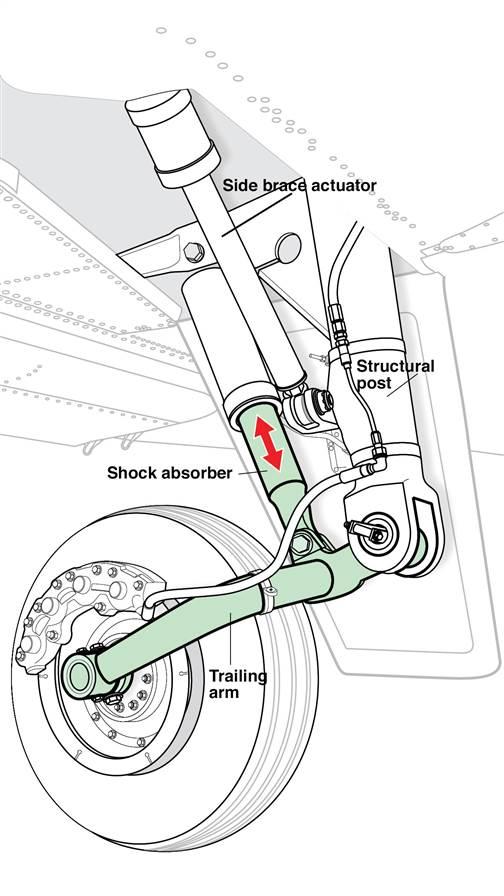How it Works: Trailing link landing gear
Smoothing out the bumps
 Look at the design of an airplane’s landing gear and you can learn a lot about how the airplane will land. The steel gear on a Cessna 172 has a tendency to spring like a trampoline, while the oleo (air and oil mixture) strut of a Piper Cherokee is more prone to solid and stiff arrivals. The best for smooth landings is a trailing link landing gear.
Look at the design of an airplane’s landing gear and you can learn a lot about how the airplane will land. The steel gear on a Cessna 172 has a tendency to spring like a trampoline, while the oleo (air and oil mixture) strut of a Piper Cherokee is more prone to solid and stiff arrivals. The best for smooth landings is a trailing link landing gear.
Using a clever bit of geometry, the trailing link landing gear takes the upward energy of the wheels contacting the runway and dissipates it through a pivot point forward of the tire, instead of straight up through a strut. An oleo strut connects the horizontal arm to the vertical, dampening the oscillations and enabling the gear to compress smoothly.
The obvious question is: Why doesn’t every airplane have a trailing link landing gear? Almost all modern jets do, and lighter airplanes have featured them going back at least to the Ercoupe in the late 1940s. Because the trailing link system is more complex, it’s heavier and more expensive to manufacture. In light airplanes, saving weight is essential.
Now, the next time you botch a landing, you can blame it on the gear.



